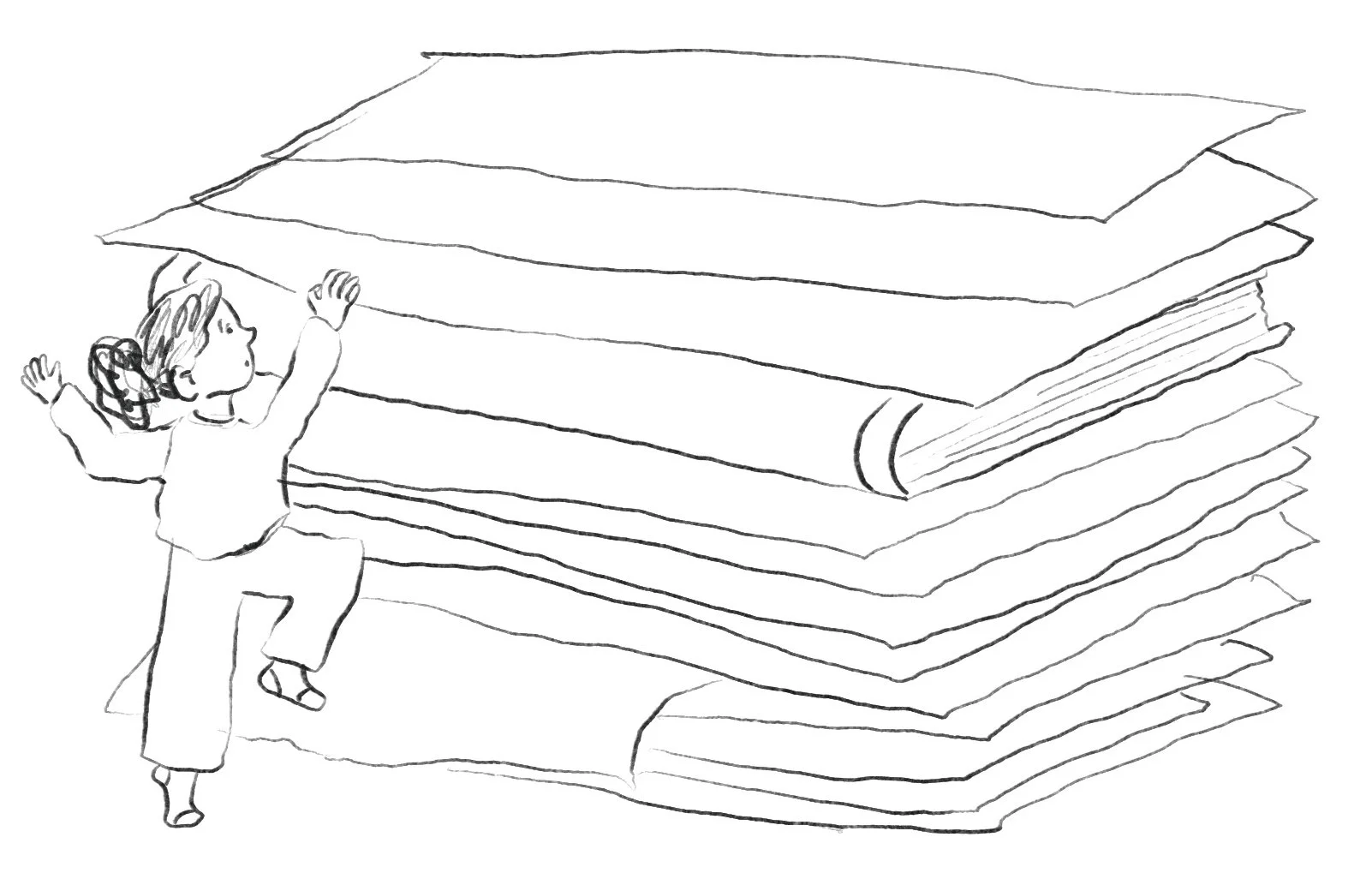Organising Loose Work…
Something I think many artists can agree on, is how overwhelming storing
and organising past work is.
I’ve recently been volunteering at The Devon Rural Archive at Shilstone, and have found that when I’ve been asked to put something away, it’s been easier because there is a set system. Large maps are labelled and placed into plan chest drawers, and each Parish has their own Ephemera Folder. These folders are arranged alphabetically on bookcases. It’s all designed to be easy to find for staff, volunteers and visitors.
As well as the Physical Archive, there’s also a Digital Catalogue of all the items stored there. This is organised as a spreadsheet meaning that if somebody comes in looking for a particular place or name, we can search for that and see what pops up.
piles of work can feel overwhelming at times - what to keep? what to discard? what to sell?
I’m at a stage in my career where I don’t have a set studio space. I have use of a garden shed, which is beautifully light to work in, but storing paper in there is not ideal due to temperature and humidity fluctuations. However, piles of artwork stacking up randomly around the house isn’t great either. I can’t find things, and it’s inconvenient for those around me, especially in a small cottage.
So last week, after watching BBC’s Fake or Fortune, I decided to tackle the piles.
I had some flat packed A4 lidded boxes left over from a craft fair, which happily each take a stack of printer paper. I labelled one for ‘Loose Animals’ (a fun label to read!), one for ‘Loose People’, and one for ‘Loose Environments’. The last box I left unlabelled for things that don’t fit into those categories. Although it might become a ‘Loose Still Life’ box at a later date. I put the boxes on this easy to assemble shoe rack from Dunelm that stands in our dining room. Each shelf is high enough for two of the boxes on top of each other, but isn’t wide enough for two side by side. In the remaining horizontal space, I store materials that I use often, so they’re ready at hand.
I also set up a spreadsheet to record everything as I put it away. I made sure to record the rough date it was made, the name of the piece, size of the piece, materials used and whether it was part of a particular project. I then used hashtags to create searchable terms like #summer or #bookillustration. I won’t lie, it took a very long time. I spent several days organising just my A4 work. I plan on doing the same to the A3 work as I think I have a couple of archive boxes that size somewhere. It’s nowhere near the organisation level at The Devon Rural Archive at Shilstone, but it’s something that seems to sit well with how I think. And that’s the important thing - finding a system that suits your needs and way of working. I tend to work with a full desk, surrounded by piles and books and materials, but I also like knowing that I can put things away somewhere I know exactly where to find them and they won’t go missing.
The boxes are basically houses for specific piles of work, and the spreadsheet are the addresses.
I’ve already seen benefits to this new system.
For example, I’ve been working on some wrapping paper designs for Christmas and had filed a sample from last year’s design so I was able to compare it to that. I also found several story ideas that I’m keen to work on and send to Publishers now that my MA is done. It’s made me look forward to making more work as I now know there’s somewhere safe to put it. I can even sort out original pieces for sale.
